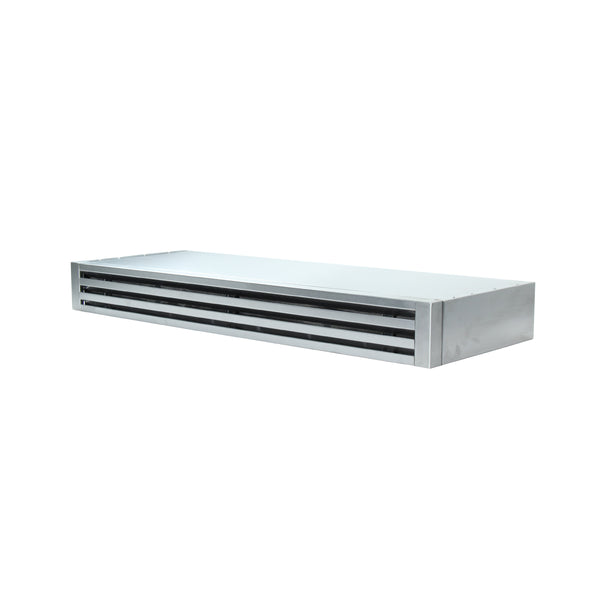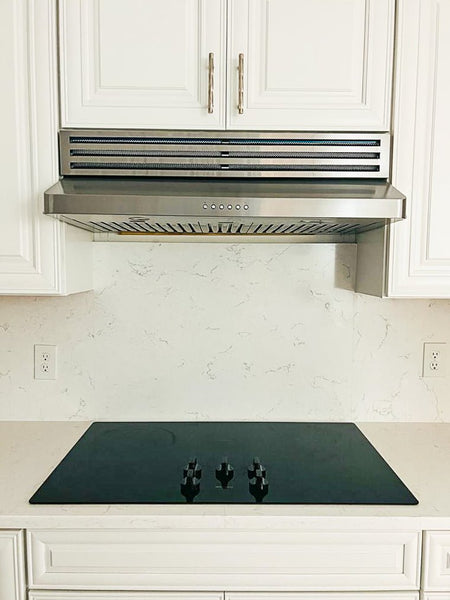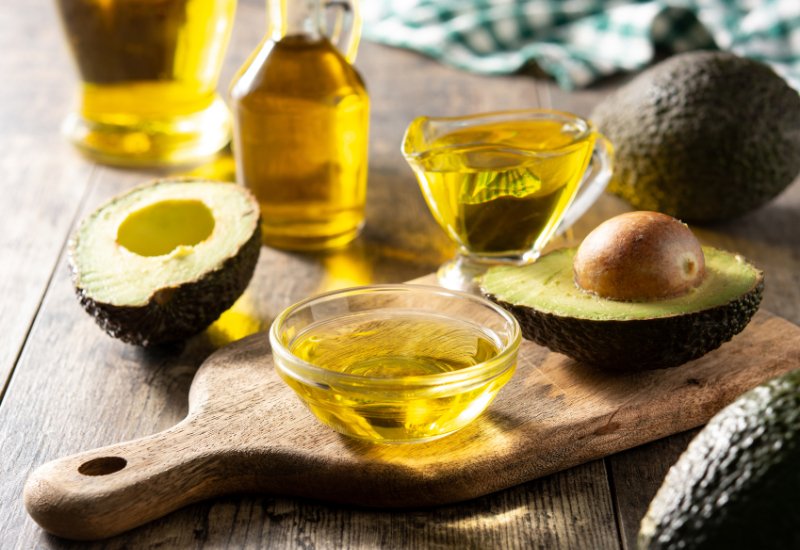How to Make Avocado Oil - Avocado oil is a versatile and healthy oil derived from ripe avocados. It has become increasingly popular in recent years for its myriad uses, ranging from cooking and frying to hair and skin treatments. With store-bought oil becoming expensive, many people are looking into making their own at home. This in-depth guide will walk you through the entire process of making it so you can enjoy its benefits without breaking the bank.
Getting Started Making Avocado Oil
The first step in making avocado oil is gathering high-quality, ripe avocados. This is crucial, as the oil extraction process relies on fresh avocado flesh. Here are some tips for choosing avocados that are perfectly ripe:
- Color: Opt for avocados with dark green to brown skin. Bright green likely means they are underripe.
- Touch: Ripe avocados yield slightly when gently pressed but are not mushy. Overly firm or soft avocados won't work as well.
- Stem test: Try removing the small stem on top. It should come off easily, revealing green flesh underneath.
Once you have several prime ripe avocados, you can begin prepping to make the oil.
Line a baking tray with parchment paper and preheating your oven to the lowest possible setting. The slower drying process helps retain nutrients.
Scoop the flesh from the avocados into a food processor or blender. You can use an avacaod or a regular spoon. Process until completely smooth, with a texture like guacamole. Spread the avocado paste evenly onto the baking tray in a thin layer no more than 1/2 inch thick.
Bake the paste at low heat, monitoring it closely. Drying time varies, but aim for the paste to become dry and slightly brown. Remove it from the oven before any burning occurs. The paste will release its oils more readily once dehydrated.
While the paste bakes, prepare a glass or plastic container to collect and store the fresh oil. Dark glass prevents light exposure from damaging the oil. Also, get out a filter like cheesecloth or coffee filters.
Extracting the Avocado Oil
Once your avocado paste is fully dried and slightly browned, it's time to extract those beneficial oils. You can use a simple hand press like we will teach you here or invest in an oil press machine.
Without the machine, here are the steps:
- Place a filter material like cheesecloth over your container.
- Add your dried avocado paste to your filter.
- Then slowly apply pressure to the cheesecloth, allowing the oil to collect in the bottom reservoir. Don't rush this process. You will see the oil start to come out. Keep going.
- When oil extraction is complete, remove the reservoir containing your fresh avocado oil.
- For ultimate purity, filter the oil again through an extra fine mesh strainer or new cheesecloth to remove any remaining solids.
Slow pressing preserves nutrients and flavor. Now your homemade avocado oil is ready for bottling! Transfer it to a sealed dark glass bottle and store it somewhere cool and dark to maintain freshness. Refrigerate for the best preservation.
Avocado Oil for Cooking Uses
Homemade avocado oil can be used in tons of delicious recipes and cooking methods. Its high smoke point and neutral flavor make it extremely versatile in the kitchen. Here are just some of the ways to cook with it:
- Pan or grill searing: Get perfect sear marks on meat, fish, or tofu without any burning.
- Stir frying or sautéing: Cook veggies like mushrooms, onions, and broccoli over high heat while keeping them moist.
- Roasting vegetables: Toss veggies in oil before roasting in the oven for caramelized flavor.
- Salad dressings: Whip up lighter vinaigrettes that let greens shine rather than overpower.
- Mayonnaise: Use it for making creamy mayo with a rich, smooth consistency.
- Marinades and sauces: Combine with herbs, spices, vinegars, mustards for bold flavors.
- Baking: Replace butter or other oils in cakes, cookies, muffins, and more.
With its high smoke point and mild flavor, your new oil can be used in almost any cooking method imaginable. Get creative and experiment!
Key Benefits and Uses of Your New Oil
Before diving into the oil extraction process, let's overview some of the top reasons avocado oil has become such a popular cooking oil choice:
- High smoke point: With a smoke point range from 375°F to 520°F, it can handle high heat cooking methods like frying, searing, and roasting.
- Subtle, neutral flavor: Unlike olive or coconut oil, avocado oil has a mild, buttery taste that won't overpower dishes.
- Heart healthy: It provides anti-inflammatory oleic acid and other monounsaturated fats that can improve cholesterol levels.
- Rich in antioxidants: It contains chlorophyll, lutein, vitamin E and other antioxidants that benefit your health.
- Moisturizing: When used topically, the oils and vitamins in avocado oil nourish and hydrate skin and hair.
But the benefits don't stop there! It contains an impressive array of nutrients:
- Chlorophyll: This green pigment not only gives the oil its vibrant hue but also acts as a natural source of antioxidants.
- Lutein: An essential antioxidant that has been linked to better eye health.
- Vitamin E: A powerful antioxidant that helps protect your body from free radicals, promoting healthy skin and hair.
Get creative with how to use it! Try drizzling it on salads or using it to cook seafood, chicken, or veggies. You can also apply it directly on skin and hair to moisturize and add shine.
Beauty and Skincare Uses
In addition to being an amazing cooking oil, avocado oil has numerous benefits when used in beauty and skincare routines. It helps moisturize, nourish, and revitalize skin and hair thanks to all its natural vitamins, minerals, and fatty acids.
Here are some of the top ways to use it for beauty purposes:
- Facial moisturizer: Apply a few drops directly to damp skin after cleansing and massage gently.
- Makeup remover: Gently massage avocado oil onto skin to dissolve makeup, then wipe away with a warm, damp cloth.
- Lip balm: Keep lips smooth and hydrated with a swipe of oil.
- Hair mask: Coat hair in it, cover with a shower cap, leave for 20 minutes, then shampoo as normal.
- Cuticle softener: Soak fingernails in it to soften and hydrate dry, cracked cuticles.
- Sunburn relief: Lightly coat mild sunburns in it to provide cooling relief and speed healing.
It truly earns its reputation as a multitasking superstar, both in the kitchen and in your beauty routine. Make your own at home and see the nourishing results!
Properly Bottling and Storage
Bottling and storing your homemade avocado oil correctly is crucial for preserving its freshness and flavor. Follow these tips:
- Transfer oil to a dark glass bottle to prevent light exposure and oxidation. Use a clean, dry bottle.
- Seal tightly with a screw-top or flip-top lid to exclude air and contaminants.
- Label with the production date to monitor freshness.
- Store in a cool, dark place like a pantry or cupboard. Keep away from heat, light, and oxygen.
- Refrigerate after opening to extend shelf life.
- Check regularly for changes in smell or texture that signal spoilage.
- Discard and make a new batch if the oil goes rancid.
Proper storage in an airtight, UV-protecting container away from heat, light, and air will maintain your avocado oil's delicious flavor and nutritional content. Refrigeration and monitoring conditions helps prevent premature spoilage.
Compared to Other Oils
| Oil | Smoke Point | Key Benefits | Best Uses |
| Avocado Oil | High (375-520°F) | - High in monounsaturated fats- Rich in antioxidants | - Frying- Sautéing- Stir-frying |
| Olive Oil | Moderate (375-405°F) | - Monounsaturated fats- Vitamin E | - Sautéing- Baking- Dressings |
| Extra Virgin Olive Oil | Low (320-375°F) | - Bold flavor- Monounsaturated fats | - Finishing- Dressings |
| Coconut Oil | Medium-High (350°F) | - Increases HDL cholesterol- Adds light coconut flavor | - Sautéing- Baking |
| Canola Oil | High (400-475°F) | - Low saturated fat- Neutral flavor | - Frying- Baking |
| Corn Oil | High (450°F) | - Inexpensive- High smoke point | - Frying |
How long does DIY avocado oil last?
Properly stored avocado oil can last up to 1 year before going rancid. For maximum shelf life, store in an airtight, UV protecting container in a cool, dark place. Refrigerating after opening can extend lifespan.
What's better - refined or unrefined avocado oil?
Unrefined (virgin) avocado oil retains the most nutrients since it's extracted without heat. Refined oils use heat processing, which can degrade some natural goodness but may improve shelf stability.
Can you cook, fry and bake with avocado oil?
Yes! With its very high smoke point, avocado oil is excellent for frying, stir-frying, grilling, baking, and most high heat cooking methods.
What are some good avocado oil recipe ideas?
- Dressings: Combine with lemon juice, vinegar, herbs, mustard, garlic
- Mayonnaise: Use in place of vegetable oil for creamy consistency
- Sautéed vegetables: Mushrooms, zucchini, onions, peppers
- Chicken/fish: Roast, grill, or pan-sear poultry and seafood
- Steak: Gets a nice sear for basting or pan-frying
- Baked goods: Add to cakes, cookies, muffins instead of butter/oil
Is it possible to make avocado oil from the seed?
Yes, you can extract oil from avocado seeds. After drying the seed for several days, grind it into a fine powder. Mix with water to form a paste, then press the paste to extract the oil. However, yield is much lower than using the avocado's flesh as well.
I hope this expanded guide on how to make avocado oil gave you all the tips and info you need to start making your own delicious avocado oil at home.













